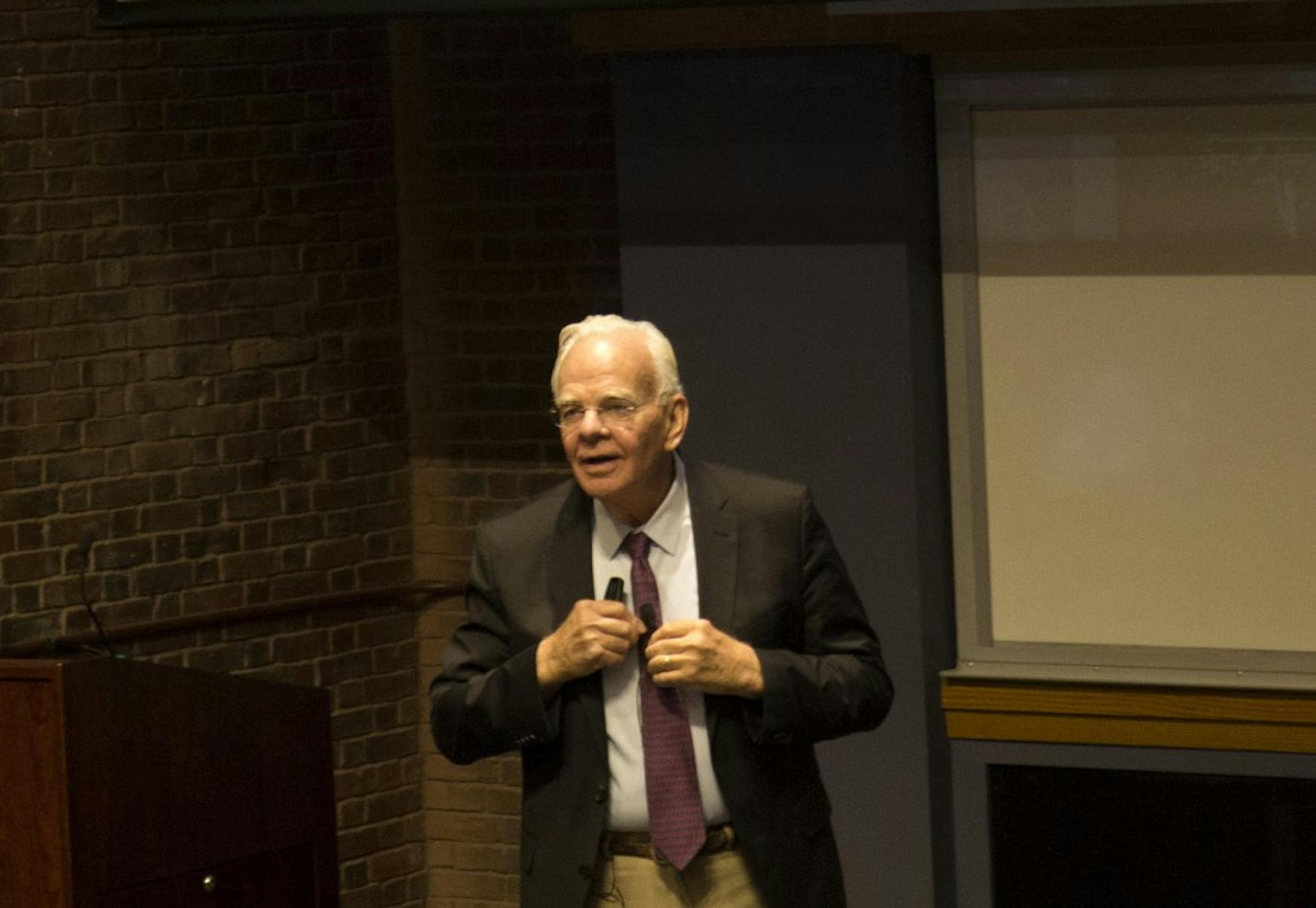Harvard prof. examines climate change impact
Dr. Jim Anderson, a Weld professor of Atmospheric Chemistry at Harvard, blamed climate change for the rise in storms, droughts, wildfires, food shortages and skin cancer in an Oct. 29 lecture. He also explained how improvements in science education can help future generations better understand and deal with climate change in the future.
Anderson started by describing the global warming effect of climate change. Rising levels of carbon dioxide and methane in the atmosphere, caused by human activity, have changed the energy flow of our climate system, according to Anderson. In addition to the energy from the sun that enters our atmosphere every year, 170 million kilowatt-hours of energy is already cycling through our climate system. This heat energy, enough to power 28 million light bulbs, has led to a rise in the temperature of our climate system, Anderson said. This has three major consequences: reducing Arctic floating ice, diminishing mountain snowpacks and warming ocean surface temperatures.
“Can the Earth lose 70 to 80 percent of its permanent Arctic ice volume in 35 years and return to its stable condition? The answer is absolutely no,” said Anderson, explaining that scientists currently expect this to happen. He then moved on to talk specifically about Greenland, which is covered by glaciers. In 2012, nearly all of Greenland’s glaciers experienced melting due to climate shifts. Melting water moves through fissures in the ice down to the bedrock that lies beneath the ice, breaking the bond between them and destabilizing the glaciers. The effect of this loss of ice is a decrease in the temperature difference between the tropics and the polar regions as the polar regions warm, according to Anderson.
But the Arctic isn’t the only region affected by climate change. According to Anderson, Tibetan glaciers supply 90 percent of India’s fresh water. Climate change has reduced mountains’ snowpacks around the world, resulting in less runoff during the summer months. This has decreased the water supply, sending many areas that rely on snowpack melt for water into permanent drought. Drought increases wildfire frequency and intensity and depletes aquifers used for irrigation, which leads to crop failures and food shortages.
These food shortages have contributed to the global “refugee problem,” according to Anderson. “It’s estimated that 20 million people in four North African and Middle Eastern countries — Somalia, South Sudan, Nigeria and Yemen — are facing extreme drought, and many of these individuals are becoming refugees, forced from their homelands in search of stable food sources,” Anderson said.
Climate change has also contributed to the warming of ocean surfaces, increasing the frequency and intensity of hurricanes, tornadoes and other storms, according to Anderson. The rising surface temperatures of the Gulf of Mexico, for example, have moved warm moist air into the Great Plains. This “moisture is essentially the gasoline that fuels the intensity of these storms,” Anderson explained.
Anderson then described the economic, political and military effects of climate change. Areas that suffer from rising sea levels can experience a loss of capital, either from property damage due to storms or from the rising sea levels themselves. In 2017, three hurricanes, Irma, Maria and Harvey — along with severe storms in the Midwest and wildfires in California — caused $350 billion of damage in the United States.
Anderson then spoke about the importance of improving our STEM education system to connect introductory college-level physics and chemistry courses to real-world problems like climate change. He explained that introductory physics and chemistry classes are currently taught in isolation, without being put into their more “compelling context.” This discourages students from pursuing science later on, he believes.
Anderson prefers to initially teach the global context of the material and then move on to discuss the fundamentals of the subject. He said that his Harvard class, “Frontiers and Foundations of Modern Chemistry: A Molecular and Global Perspective,” is “significantly more difficult than the lower level” chemistry class, but draws three times as many students. The global perspectives introduced in the class make it more interesting and accessible to students interested in how science relates to the real world. Anderson said that his class makes connections to climate change, human health, international arms control negotiations and technology leadership.
Anderson ended by stressing the importance of encouraging students to pursue science education and careers to prepare our next generation to solve world problems.



Please note All comments are eligible for publication in The Justice.